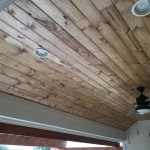Cost For A Patio: A Comprehensive Guide
Adding a patio to a property can significantly enhance its value and provide an appealing outdoor living space. However, understanding the costs involved is crucial for effective budgeting and decision-making. The overall cost of a patio varies widely depending on numerous factors, encompassing materials, size, design complexity, labor, and geographical location. This article provides a detailed overview of these factors to facilitate a clearer understanding of patio construction costs.
Material Selection and its Impact on Cost
The choice of patio material is arguably the most significant factor influencing the overall cost. Various materials offer different aesthetic qualities, durability levels, and installation requirements, directly affecting both material expenses and labor costs.
Concrete: Concrete is a prevalent and relatively affordable option. A basic poured concrete patio typically costs between $6 to $12 per square foot. This price includes the concrete mix, labor for pouring and finishing, and basic site preparation. Stamped concrete, which involves adding patterns and colors to the poured concrete, increases the cost to $8 to $18 per square foot. The added cost accounts for specialized stamping tools and the expertise required to achieve the desired aesthetic.
Brick: Brick patios offer a classic and aesthetically pleasing look. However, they tend to be more expensive than concrete. The cost of a brick patio ranges from $10 to $20 per square foot, encompassing the price of the bricks themselves, the base material (sand or gravel), and the labor for installation. The labor costs associated with brick patios are generally higher than those for concrete due to the meticulous process of laying individual bricks.
Pavers: Pavers, available in concrete, brick, or natural stone, offer a wide range of design choices and can be a durable option. The cost of a paver patio typically falls between $8 and $25 per square foot. The price range reflects the diverse options available, from basic concrete pavers to high-end natural stone pavers. Installation involves preparing a compacted base, laying the pavers, and filling the joints with sand or polymeric sand. The cost can also increase depending on the chosen laying pattern which may require more labor to execute.
Natural Stone: Natural stone, such as flagstone, bluestone, or slate, presents a more luxurious and unique aesthetic. Consequently, it is typically the most expensive patio material. The cost of a natural stone patio can range from $15 to $40 per square foot. This higher price encompasses the cost of the stone itself, which can vary significantly depending on the type, quality, and availability, as well as the increased labor required for installation. Natural stone often needs to be cut and shaped to fit properly, adding to the labor time and associated costs.
Gravel: Gravel patios represent a budget-friendly option. They offer good drainage and can be relatively easy to install. The cost of a gravel patio typically ranges from $3 to $10 per square foot. The lower price reflects the inexpensive nature of gravel and the simpler installation process, which typically involves creating a compacted base and spreading the gravel evenly.
Besides the material cost, it's important to consider the durability and maintenance needs of each material. Some materials require more frequent cleaning and sealing to maintain their appearance and longevity, which can add to the overall cost of ownership.
Size and Design Complexity
The size of the patio is a direct determinant of the total cost. A larger patio will naturally require more materials and labor, translating to higher overall expenses. Similarly, the complexity of the patio's design can significantly impact costs. Intricate patterns, curved edges, and multiple levels require more time and skill to execute, increasing labor costs.
Patio Size: The cost is generally calculated on a per-square-foot basis. Therefore, simply multiplying the chosen material's cost per square foot by the desired patio size will provide a preliminary estimate of the material cost. However, it's crucial to account for waste. Contractors typically add a percentage to the material order to account for cuts, breakage, and other unforeseen issues. This percentage can range from 5% to 15%, depending on the material and the complexity of the design.
Design Complexity: A simple square or rectangular patio is the least expensive to construct. More complex designs, such as those with curved edges, circular patterns, or multiple levels, necessitate more precise cutting, shaping, and fitting of materials. This increases the labor time and may require specialized tools, adding to the overall cost. For example, a patio with a built-in fire pit or seating area will undoubtedly cost more than a simple, flat patio.
Grading & Site Preparation: Site preparation is another significant factor affecting cost. If the area where the patio will be built is uneven or requires significant grading, the cost will increase. This may involve removing existing vegetation, leveling the ground, and compacting the soil to ensure a stable base. In some cases, retaining walls may be necessary to create a level surface, which will add substantially to the cost. The need for excavation and removal of debris can also contribute to the overall expense.
Permits: In many municipalities, a building permit is required for patio construction, especially for larger patios or those involving structural elements. The cost of a permit can vary depending on the location and the scope of the project. Failing to obtain necessary permits can result in fines and delays, further complicating the project.
Labor Costs and Geographical Location
Labor costs constitute a significant portion of the overall patio construction budget. Rates vary depending on the contractor's experience, the complexity of the project, and the geographical location. Areas with higher living costs typically have higher labor rates.
Contractor Selection: Obtaining multiple quotes from different contractors is advisable to gain a better understanding of the prevailing labor rates in the area. Comparing quotes should not only focus on price but also on the contractor's experience, reputation, and the scope of work included in the estimate. It's crucial to verify that the contractor is licensed and insured to protect against potential liabilities.
Labor Rate Variations: Labor rates can vary significantly based on the region. Metropolitan areas and regions with high demand for construction services tend to have higher labor rates. Rural areas or regions with lower demand may offer more competitive rates. The complexity of the project also influences labor costs. More intricate designs, requiring specialized skills, will command higher labor rates.
Additional Labor Costs: Beyond the basic installation, several other labor-related costs may arise. These include site preparation, excavation, material delivery, and cleanup. Ensure that the contractor's quote clearly outlines all included labor costs to avoid unexpected charges later in the project. For example, some contractors may charge extra for hauling away debris or for specialized equipment rental.
Geographical Impact: The geographical location significantly impacts the accessibility and cost of materials. Regions with abundant natural stone resources may have lower material costs for stone patios compared to regions where stone needs to be transported from distant locations. Similarly, areas with specific soil conditions or climate patterns may necessitate specialized construction techniques or materials, further influencing the cost.
Furthermore, local regulations and building codes can influence labor costs. Some municipalities may require specific inspections or certifications, adding to the overall project expenses.
Besides the primary factors discussed above, several other elements can contribute to the overall cost of a patio. These include: the addition of retaining walls, steps, or other structural elements; the incorporation of built-in features such as fire pits, seating areas, or outdoor kitchens; the installation of lighting or electrical outlets; and landscaping around the patio. The cost of these additional features can vary widely depending on the materials, design, and complexity of the installation.
Accurately estimating the cost of a patio requires careful consideration of all these factors. Obtaining multiple quotes from reputable contractors, thoroughly reviewing their proposals, and understanding the scope of work involved are essential steps in the budgeting process. By taking the time to research and plan the project effectively, property owners can ensure that their new patio is both aesthetically pleasing and financially sound.

How Much Does A Patio Cost Installation 2024 Landscaping Network

How Much Does A New Patio Cost To Build

2024 Patio Cost Average To Build And Install A Angi

How Much Does A Concrete Patio Cost Arlington

How Much Does A Patio Cost Installation 2024 Landscaping Network

Stone Patio Paving Costs Sol Vida Landscaping

How Much Does A Patio Cost 2024 S

How Much Does A New Patio Cost Marshalls

Average Flagstone Patio S In 2024 Forbes Home

Cost To Install A Patio 2024 Calculator
Related Posts








